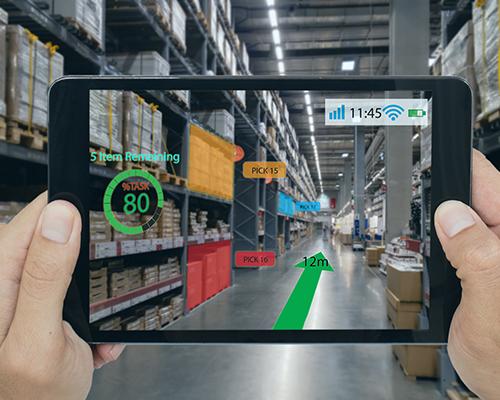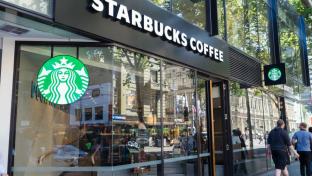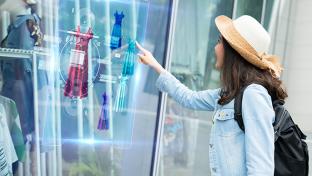Building Solutions for the Future of Retail, One Person at a Time
After we get past this moment of uncertainty with COVID-19, what does the future of the retail worker look like? Some would say it’s marked by more uncertainty, where automation and AI threaten millions of U.S. jobs — a dystopian view of worker-less factories and worker-less stores, where machines rule and people are pushed aside in the name of efficiency.
How about an alternative view? Now, more than ever, we’re realizing the real impact and power of people in our global economy. Instead of the Orwellian future, let’s imagine one where workers, rather than being replaced by automation and technology, become deeply intertwined with it. As Deloitte puts it: “Almost every job is being reinvented as the workplace evolves to a flexible workforce augmented by software, robots, crowds and artificial intelligence.”
The retail industry is positioned to transform how people work. Flexibility, mobility and efficiency can all be literally put into the hands of the modern worker. Technologies built to strengthen the human worker are shaping the industry and helping to build a smarter, safer workforce.
See also: How Giant Food Stores is Attracting Families with AR and Experiences
Augmenting retail workers, along with those involved in logistics and the entire supply chain, can be a way to not only make retail processes more efficient; it helps employees maintain a competitive edge.
Technology keeping workers connected and safe
Connected mobile devices are providing real-time data to information systems so front-line workers can accomplish more from wherever they are. This decentralized approach provides new opportunities for increased efficiency and reduces the chance for human error. It also contributes to a safer workplace.
For example, glasses can provide instructions through augmented reality. Such glasses can help take the guesswork out of complex processes or train new employees rapidly. They also identify unsafe practices before they turn into habits which can lead to injuries or serious accidents.
In terms of safety, connected vests can alert forklifts when a worker is close. This kind of smart technology is especially helpful in noisy warehouse environments where workers may not notice potential hazards. And scanning technology in smart gloves offer front-line workers the ability to scan from a distance and get real-time information right where they are — saving time and reducing repetitive strain injuries.
See also: RIS 2020 Retail Tech Study: Investing in the Data-Fueled Future
Distractions often lead to injuries, so technology that helps workers concentrate fully on the task in front of them allows for greater efficiency and makes the industrial workplace safer.
Workforce optimization: Helping workers in a logistics-filled world
Retail is increasingly becoming a logistics business, one that involves a complex supply chain and extremely organized processes to deliver one-day, even same-day shipping.
There are numerous opportunities to enhance the worker experience and their performance as they work to meet these changing demands. The hands-free nature of wearable devices can have a positive impact on worker performance and safety. Ergonomic work spaces reduce the risk of repetitive strain injury and accidents resulting from fatigue.
Wearables also can be connected to other devices such as tablets, smartwatches or wearable terminals to provide individuals with additional information. They become augmented with the data they need.
In a warehouse setting, rather than having to return to a terminal display, workers are immediately provided with the next pick location via their wearable device. Essentially, wearable devices enable them to avoid extraneous, tiring activities: every step, every arm movement is directly related to the task at hand.
By reducing the stress on the body through unnecessary and repetitive actions, wearables ease the strain on the worker, resulting in fewer accidents and injuries from worker error and strain.
Wearables as a tool to shape the future of retail and logistics
The wearable scanner is one example of how wearables are shaping the workforce. Replacing the traditional barcode scanner gun with a glove that has built-in scan functionality offers a number of benefits. Workers have both hands free, with full dexterity, to pick up items and negotiate warehouse locations safely. The worker simply presses a button in the glove to scan an item, making the entire process practically seamless.
Furthermore, there is no need to put down and pick up a device; while scanners are relatively lightweight, removing this level of additional weight from a worker can have a tangible impact on fatigue (not to mention, a time savings of several seconds for every scan).
In warehouse logistics where the workflow involves frequently picking up and rearranging items, handheld scanners represent a hazard, as they increase the risk that a worker will drop something on themselves or a co-worker. Wearable technology reduces that risk and, with their hands free, the worker is more able to act in the event of danger.
From front-line workers in warehouses to retail sales associates, the future of wearables in retail is bright. And as companies continue to design products specifically for the worker, we will witness a future where technological advances don’t displace people. Rather, they complement them.
Tracy Hansen is the president of ProGlove North America. ProGlove develops industrial wearables used by more than 500 renowned organizations in manufacturing, production, logistics and retail. ProGlove was founded in December 2014 after winning the Intel “Make it Wearable” Challenge in Silicon Valley. ProGlove is backed by growth–focused investors Summit Partners, DICP and Bayern Capital. ProGlove employs 200 people from over 40 countries at its headquarters office sites in Munich and Chicago.



4cc3.jpg)


